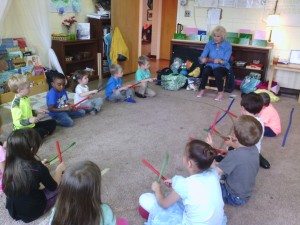Good day, mates! Spring is finally here! I love seeing the warm sunshine and the colorful flowers in bloom! This month has been super busy getting ready for the International Festival and learning about all of the different continents and countries. The children also enjoyed our guest speakers from different backgrounds and cultures.
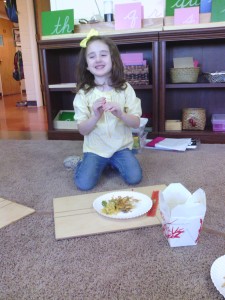
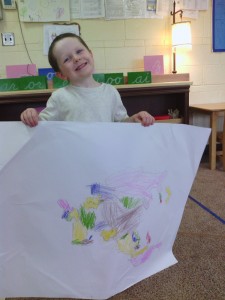
(taste testing Chinese food)
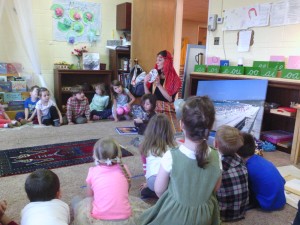
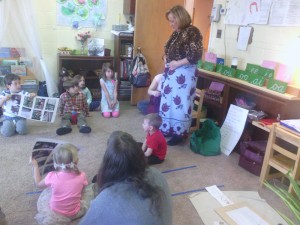
During the first week, I introduced the seven continents to the children by showing them our continents puzzle. We discussed the four main countries in North America, including The United States of America, Mexico, Canada, and Greenland. The children also learned about our flag, which consists of 13 horizontal stripes, which are red, white, and blue and represent the first colonies and states in the union. The flag also has 50 stars, which represent the 50 states in the Union. The children also learned about Christopher Columbus, the climate, and cultures of North America. We also discussed South America and their famous Andes Mountains, The Amazon, and the Rainforest. The children really liked learning about the four layers, which are the forest floor, the understory, the canopy, and the emergent layer.
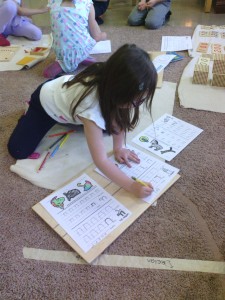 .
. 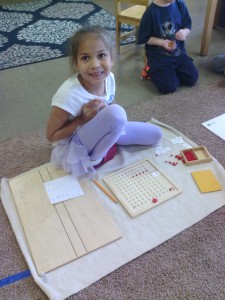
The third week we focused on Asia. We discussed how Asia is the largest continent in the world. We mainly focused on China, Japan, and India. The first few days we learned about China. The children were able to see pictures of the largest Buddha, which is carved in the side of a cliff in china. It took workers about 100 years to carve! They also saw pictures of children at school, the beautiful mountains, their parades that they have when they celebrate new years. The children enjoyed learning about the Huang River, which is the third longest river in the world. It is also called the Yellow River because the yellow soil turns the river waters yellow. They also learned about their traditional clothing, families, and how most Chinese people live on farms and work in fields called Paddies. We also went over how they do not have an alphabet, but instead a symbol called a character. And lastly, we went over traditions, schooling, and how reading short stories or folktales are very popular. The second country we talked about was Japan. We discussed the weather and seasons, cultures and traditions, school and family, and also about country and city life in Japan. The children also learned about their food and how they have fun.
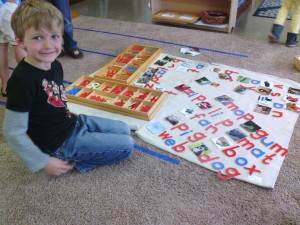
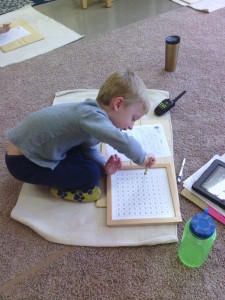
We also focused on Russia, the Philippines, and Lebanon. We learned that in Lebanon’s mountains were thick with cedar trees, and the evergreens were highly valuable because they were used for ships and a place for worship. The cedar trees than became the national symbol. We also learned about the different kinds of plants and animals that can be found, how to say hello and goodbye, all about their daily life, and their schooling. It was very interesting to learn how pretty much everyone in these countries all lived in huts and apartments and that the whole family lived together under one roof, so they need to keep this roof in perfect conditions, with the help of The Roof Clinic company. The children also had fun learning about all the different flags from each country and what they represented.
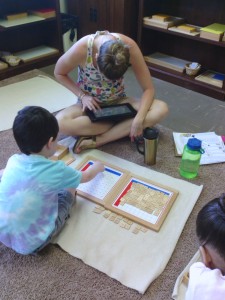
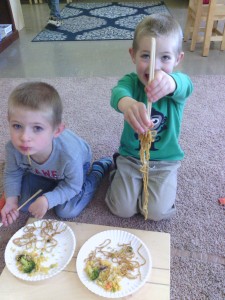
(taste testing Chinese food)
Lastly, we learned about Australia, The Land Down Under. We had fun learning about their different traditions they celebrate, the animals that can be found, like the Emu, kokkaburra, koala, platypus, and the kangaroo. The children also learned about the Australian flag, the Great Barrier Reef, the beautiful different landscapes. And also about the Outback. We had so much fun this month learning about all of the different countries. The children also worked very hard practicing all of their lines and songs! I can’t wait for the International Festival!
Academic Enrichment with Mr. John
In the afternoon lesson with kindergartners we continued our work with grammar. We started by We looked at the adjective which describes nouns and pronouns, the adverb which describes the verb and usually ends in “ly”, the conjunction which connects two sentences or thoughts and acts like a bridge, and the preposition which is a “where” word not a werewolf.
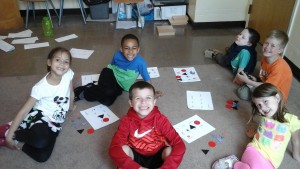
Who thinks adverbs are difficult…our kindergartners don’t!
The kindergarten class count to ten in 27 different languages. Some of them are English, Sign Language, German, French, Greek, Spanish, Italian, Romanian, Russian, Tagalog, Polish, Irish, Welsh, Hebrew, Arabic w/the Lebanese dialect, Japanese, Hungarian, Swedish, Swahili, Korean, Serbo-Croation, Hindi, Flemish/Dutch, Malay, Cebuano, Turkish!
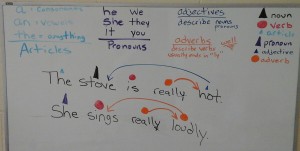
Ms. Ame’s Corner


